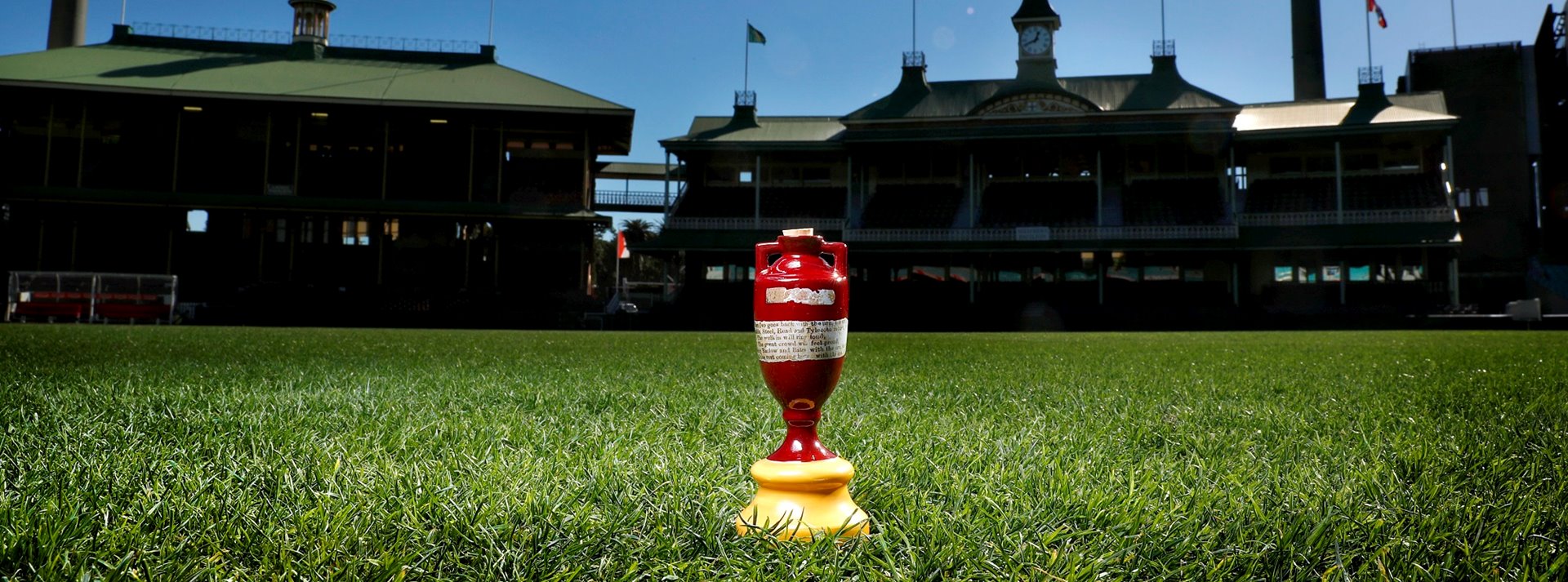Ashes spectators in Sydney scanned by facial recognition tech


Replica Ashes Urn at the Sydney Cricket Ground
A sell-out crowd of 45,000 spectators watching the fifth and final Ashes Test in Sydney this week is, in turn, being watched by a team of security professionals at the Sydney Cricket Ground (SCG).
For the first time, the SCG's security team is utilising 820 new cameras equipped with facial recognition technology to scrutinise the crowd for safety threats.
The cameras, which feed into an upgraded operations centre inside the ground, allow security personnel to monitor patrons as they approach the ground and while they're inside the venue, an SCG Trust spokesman said on Thursday.
The AU$3.5 million upgrade to security includes a new video analytics system that can detect and zoom in on unattended bags, suspicious vehicles, and strange behaviour.
A trial in 2017 allowed police and security to intercept six banned spectators as they tried to enter the SCG.
"We have followed the lead of other major venues around the world in investing significantly in upgrading our security technology, providing airport-style levels of safety for sports fans," SCG Trust chief executive Jamie Barkley said in a statement.
SCG security manager Luke Schibeci said the ground will work alongside police and other law-enforcement agencies to maximise the system's potential and keep patrons safe.
The new operations room is connected to a police command room at the grounds and linked to the Transport Management Centre and the NSW Police operations centre.
"In particular, we want to understand how the technology can better protect our venues, workers, and patrons from the threat of terrorism," Schibeci said in a statement.
Speaking with ZDNet last year, Queensland Commonwealth Games' head of security Danny Baade said facial recognition is one of the technologies being considered for the event, noting that it is one of many safety and security strategies that are being looked at or will be deployed for the games in March.
The political heads of Australia's states and territories unanimously agreed to establish a facial biometric database in October, which will allow law-enforcement agencies across the country to locate a citizen via real-time facial recognition.
"To be clear about this, this is not accessing photo ID information that is not currently available," Prime Minister Malcolm Turnbull said at the time, noting that the database solution will simply be bringing together federal government photo identification, passports, and visas with state- and territory-issued driver's licences.
"These are all available to law-enforcement agencies now and have been for many years, if not for generations," he said.
"It shouldn't take seven days to be able to verify someone's identity or seek to match a photograph of somebody that is a person of interest. It should be able to be done seamlessly in real time."
An SMS survey conducted by polling company Roy Morgan shortly after the state and territory heads gave the database the nod found that most respondents were not concerned by Australia's upcoming facial recognition system, with 67.5 percent stating they were unconcerned.
"Privacy is now a thing of the past," Roy Morgan quoted one respondent as saying.
"We have it on our passports already. I would be more concerned with social media such as Facebook and Snapchat. They own millions of facial photos which you can never remove," another said.
Last month, NEC Australia and vision analytics firm CrowdOptic announced a live video streaming security system that enables real-time facial recognition of footage captured from fixed cameras and mobile camera sensors in body cams, smartphones, and drones.
CrowdOptic's technology uses triangulation to detect when two or more cameras are aimed at the same person, which, according to NEC, offers new capabilities in mobility to NEC's NeoFace solution.
With AAP
Related Coverage
- Too many false alarms for population-wide facial surveillance: NEC
- New AWS service will bring image recognition to real-time video
- Facial recognition technology to replace passports at Australian airports
- Australian national security COAG says yes to facial biometric database
- How one Sheriff's Office is using machine learning to uncover persons of interest
- Facial recognition technology could be used to track visa-holders leaving the US (TechRepublic)
- iPhone's Face ID can be hacked, but here's why nobody needs to panic (TechRepublic)
- VIDEO: 5 Reasons to Trust Apple's Face ID (TechRepublic)